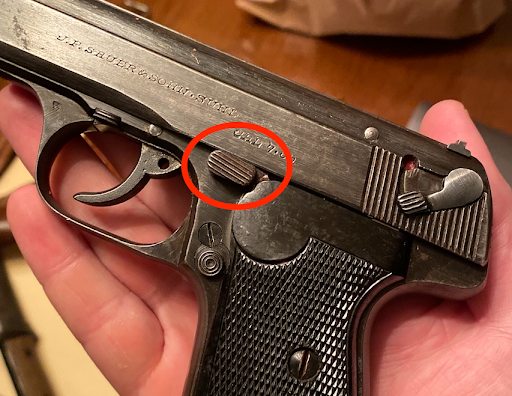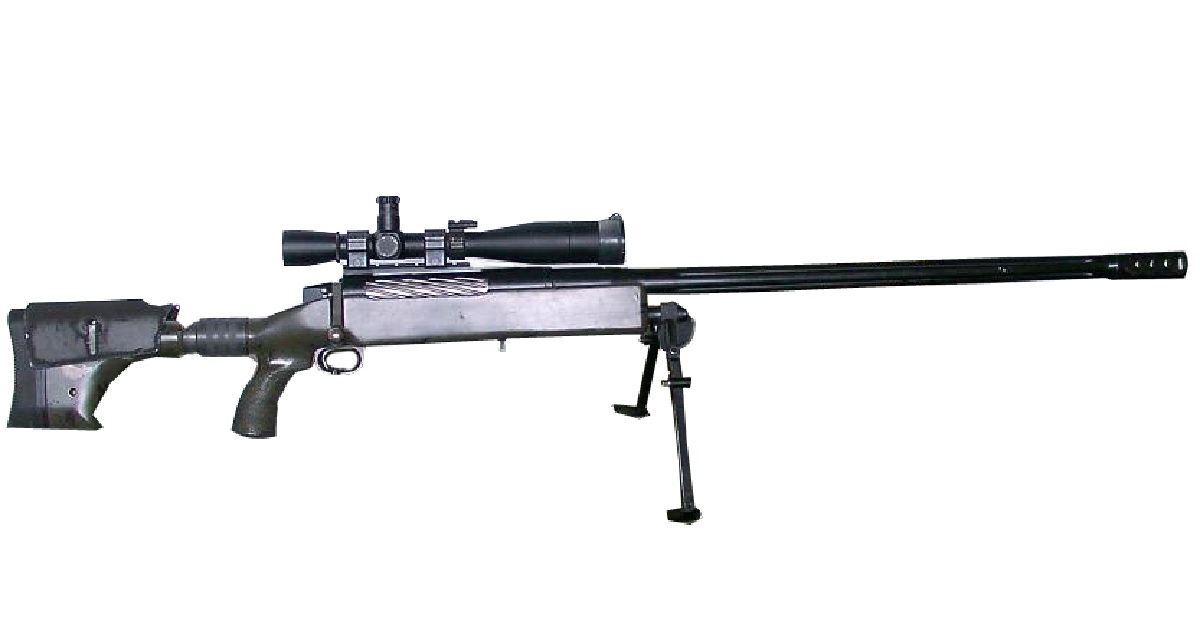
Over the last few years, my uncle and I have started up a new tradition for the holidays: we hit our local shooting range. He’s got a few cool guns that we shoot together, like a lever-action rifle chambered in .32 Winchester Special (I had never heard of it before, either).
But by far one of the coolest guns he brought to our range day this year was a Sauer 38H pistol. My grandpa — my uncle’s dad — brought this gun back from the Second World War after confiscating it from a German POW. That makes this gun nearly 100 years old. After test-firing it a few times at the range, my uncle gave it to me as a holiday gift.
There’s a lot of history behind the Sauer 38H, and its mechanical inner workings are pretty cool, too. So, I figured it would make a cool topic to cover in a post for SDI!
The Sauer 38H: Background
The Sauer 38H was originally designed by J.P. Sauer & Sohn (the precursor to Sig Sauer) in 1938. It entered production that year, and German factories churned them out until April of 1945, when the war in Europe was all but over. Nazi Germany produced around 200,000 of these pistols.
Originally, Sauer & Sohn developed the 38H for the commercial market against other small arms companies like Mauser. However, it was quickly adopted into service for various police forces.
Sauer 38H: Action and Mechanics
The Sauer 38H is a direct blowback pistol chambered in 7.65 Browning (aka .32 ACP). It uses 8-round box magazines, for a total capacity of 9 when cocked and locked. Its sights are fairly standard pistol fare, with a rear notch and front blade. It features a 3.4-inch barrel, and the grips are made of Bakelite.
It’s a fairly simple pistol. Its design features a double-action trigger and a recoil spring situated around the barrel (like a 1911). Unlike the 1911, though, the barrel does not tilt up and down when the action cycles. Instead, the barrel is fixed onto the frame of the gun.
The “H” in its model name stands for “hahn,” which is a German term that refers to the gun’s internal hammer. It’s just located inside the slide. It’s a fairly forward-thinking design, and one that some modern pistols currently use (like the FN Reflex).
The 38H’s slide will tell you a lot about which version of the gun you have. Early versions feature the text “J.P. Sauer & Sohn” on the left side. Mid-war versions only feature the “7.65” caliber designation. By late in the war, the German army was trying to churn these things out as quickly as possible, so they don’t feature any text at all on the slide.
The gun’s slide features a manual thumb safety. There’s also a small pin on the slide that will pop out if the chamber is loaded. Late war variants also got rid of certain design elements for production simplicity. For example, they don’t have a thumb safety.
One cool feature about the 38H is its decocking mechanism. If you’re familiar with some models of the Beretta 92, this will look familiar to you.

You all know how much I love red circles from my AK how-to articles.
The decocker lowers the internal hammer, allowing a user to safely re-holster the gun with one hand. The Sauer 38H is actually the first pistol in history to feature a decocking lever.
How Does it Shoot?
I’ve put this gun through its paces on a few occasions — it definitely doesn’t join me on every range trip. It’s only ever jammed once (while a friend was shooting it).
That’s pretty impressive for a gun with stock parts that are nearly a century old. I have a sneaking suspicion that the gun’s recoil spring is starting to fail, so I’m going to replace that to ensure it keeps running smoothly.
Learn More About Firearms at SDI
If you love learning about old firearms (and keeping them in working order), you’ll be right at home at SDI. With multiple firearms tech programs to offer, SDI can help you become a firearm expert. To learn more about the programs SDI offers, click here.


